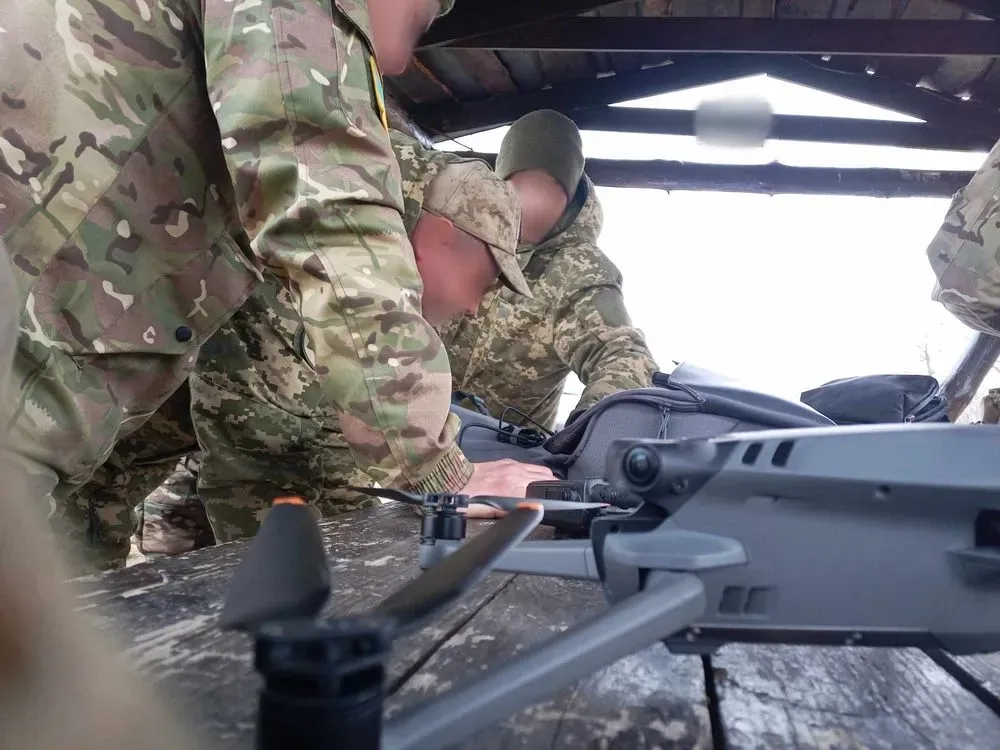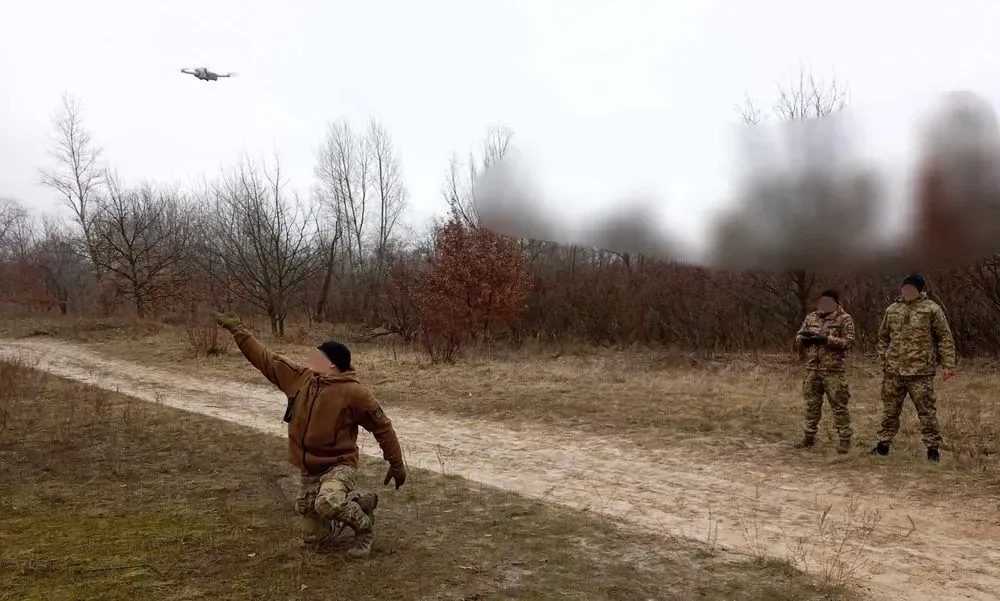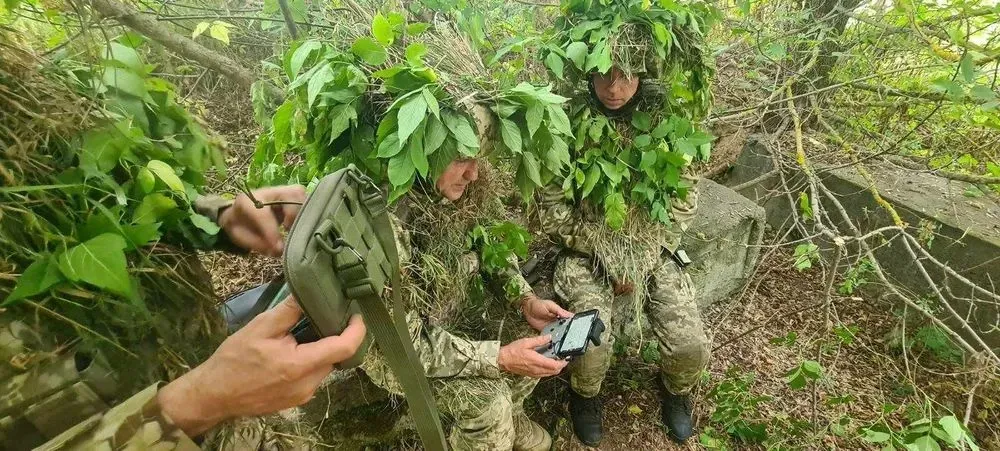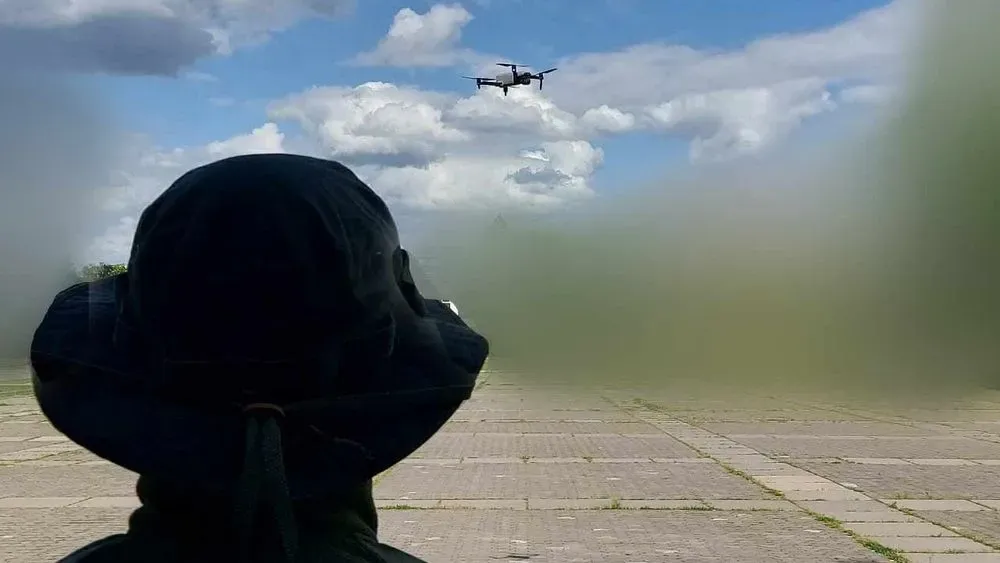Drones from secondary means, as it was believed at the beginning of the invasion, should become a priority: Association of UAV Schools talks about pilot training
Kyiv • UNN
The main thing for a future drone operator is the desire to learn and destroy the enemy

The de jure recognition of UAV schools is moving very slowly. One of the goals is to create an Association in partnership with the State Aviation Administration of Ukraine, the General Directorate of Unmanned Systems of the General Staff of the Armed Forces of Ukraine, and in particular representatives of the Cabinet of Ministers and the Ministry of Education and Science, and to develop training programs in accordance with legal norms that would meet the requirements of the time and the needs of the Armed Forces. Serhiy Savchenko, a member of the Board of the Independent Association of UAV Schools of Ukraine and head of the Eye in the Sky school, told this in an interview with UNN.

How many UAV schools are there in Ukraine? How many schools are members of the Association?
We, as an association of UAV schools in Ukraine, were established in December 2023 by the joint efforts of civilian UAV operator training schools, most of which have been operating since the beginning of Russia's full-scale aggression against Ukraine in March-April 2022. Some schools have been training on unmanned systems long before February 2022. Currently, we have 15 schools in our ranks and this number is growing every month. We are aware of about 40 civilian schools that are engaged in training on unmanned aerial vehicles of various types.
How long does the training last? And are women interested in such training?
Depending on the type of UAV, the training period can range from 1 week to several months. There are definitely women among the graduates of our schools, as well as among the instructors. They are skilled pilots and excellent specialists, but the relative percentage of the total number is small.
In general, today the vast majority of our cadets are active soldiers of the Armed Forces of Ukraine of all branches, including special forces, terrorist defense, national police, national guard, border guards, etc.

What specialties do people most often want to study to become drone operators? Which specialists do you prefer?
We are ready to train everyone - the war does not ask how many diplomas you have, but there are certain selection criteria, especially when piloting FPV drones, they are primarily related to the stable vestibular apparatus of the cadets. And the general ones are, first of all, the desire to learn and experience new things, the motivation to destroy the Russians, to be more effective on the battlefield. Of course, the basic level of education or specialty is of great importance - it affects how quickly the cadets in the group can master the program, but in the cases of our colleagues there are skilled pilots who came to study without even knowing how to write (sometimes, in our time of universal literacy), but having great motivation and desire (thanks to the patience of the instructors of this school), they became excellent specialists.
How exactly does the training take place? Is it a kind of universal training, or is it based on specific areas/models?
Just like cars are different, drones are different, but they can be divided into certain areas - classic civilian drones like Mavic or AUTEL, which are used on the front line, FPV drones, heavy drones and unmanned aerial vehicles and systems like the wing. Of course they all have differences and of course they all have their own training programs.
One way or another, all types of remote-controlled vehicles that are available or developed by our (Ukrainian) developers are presented in the curricula of our schools or training centers at the manufacturers of these remote-controlled systems.
Is this training funded by the state? How much does it cost to train one UAV operator
If we talk about state funding of civilian schools that train the military, this implies a great responsibility for the money spent to taxpayers in the first place. By putting the quality of education first, we can accept this honor and responsibility. We are ready to communicate and are communicating with the state on this issue.
However, we understand that for this to happen, the state must be convinced that the specialists who leave the walls of our schools meet the requirements it sets for graduates of such institutions. As de facto schools, most of the Association's member schools were founded in the spring of 2022, and are participants in the Army of Drones project, which was funded by UNITED 24. During this time, the schools have trained more than 20 thousand cadets in a very short time, whenever it was needed.
We have not only the desire, but also the experience, but de jure recognition of schools is moving very slowly. By the way, one of the goals is to create an Association in partnership with the State Aviation Administration of Ukraine (SAAU), the General Directorate of Unmanned Systems of the General Staff of the Armed Forces of Ukraine, representatives of the Cabinet of Ministers of Ukraine, the Ministry of Education and Science, and manufacturers to synchronize and develop training programs in accordance with the legal norms that currently exist in Ukraine and that would meet the requirements of the time and the needs of the Armed Forces. When this happens, I think we can talk about legal recognition and state funding. We are actively working in this direction.
Nowadays, education in our schools is mainly funded by volunteers, founders, donations from patrons or manufacturers, and personal funds from military personnel, unless otherwise. Each school decides on its own and finds ways to finance itself. As for the cost of training, different schools have different prices, which vary depending on the type of UAV, program and duration of training, but all have an acceptable price tag, so to speak.

At what stage is the development of curricula and the establishment of the Association in partnership with the State Administration of Ukraine for Academic Affairs, the State Bureau of Statistics, representatives of the Cabinet of Ministers, and the Ministry of Education and Science
We had meetings with all of them and even had several joint meetings of all these departments, relatively speaking. When we all met together and thought about how we could do this or that right. The state, the State Unmanned Systems Administration (SUSA), and the State Aviation Administration of Ukraine (SAAU) are certainly interested, but we understand that this is the way to bring everything to a common denominator. The common denominator is the regulations, what we have and what we are guided by when using the airspace - the SAAU is responsible for this.
What our military needs are requirements that are not imposed, but would be desirable from the State Directorate of Unmanned Systems. This does not always fit within the framework that the GUDAU can afford, because it is guided by laws and regulations that they cannot change, so there must be a Cabinet of Ministers that understands that it is necessary to amend the legislation to make this path less thorny.
Therefore, these are very fruitful meetings, and we have already had several of them. We have outlined the contours of our work as the Association of Unmanned Aerial Vehicles. We understand what we need to do to comply with the norms of the State Aviation Administration of Ukraine and meet the requirements of the GUBS, i.e. the Armed Forces of Ukraine, and we are now working on this very actively. We now have a question of getting into the realm of certification of schools that would be certified as educational institutions that can provide education under martial law. This will satisfy the State Education Administration. We have representatives who communicate with the Ministry of Education and Science to create a single training program that would satisfy the State Administration and the State Police. That is, we are creating a system, a complex.
What has changed since the decision to create the Unmanned Systems Forces in the Armed Forces of Ukraine?
It's too early to say what has changed, but we have very high hopes that unmanned systems will become a priority from secondary means, as was believed at the beginning of the full-scale invasion. Just as World War II was once called the war of tanks, this war has already been dubbed the war of drones. It is very good that the leadership of the state and the Armed Forces have an understanding of this process. In our turn, we are deeply convinced that the advantage in this war will go to the one who is more technologically advanced. In terms of human resources, we simply have no choice but to become a country with a more technologically advanced army. Our advantage is the flexibility of training, the speed of change, and a diversified approach to training in different types and systems, which have emerged over the past 2 years. As the Association of UAV Schools of Ukraine, our goal is to build a high-quality training system that would meet the needs of the Armed Forces of Ukraine for first-class pilots with the skills to use the most advanced developments.
There is a need for great engineers. Many of the schools involve active military personnel in their training to feel the needs of the frontline and the changes that are taking place on the front line. Many are ready to hire demobilized soldiers, even those without management experience, but with a flair for teaching and a desire to learn - this is a socially responsible approach, in my opinion
What are the tasks set for UAV schools
I can't speak for all schools, but the priorities, goals and objectives of our Association, as determined by a joint decision of all schools, are to create a single information and training space for all schools, a single training standard, single criteria for evaluating training and, as a result, to improve the quality of cadet training and safety when using unmanned aerial systems during missions. And most importantly, to save the lives of our military.

Do you know how many people are ready to join the Unmanned Systems Forces after training?
We have already said that the vast majority of our cadets are active military personnel, and those who are not are those who have thought about what they will do when they are drafted into the Armed Forces or those who already know they will go and want to get real skills in operating unmanned systems.
How many UAV operators have graduated from schools since the beginning of 2022?
Most of our schools were and are participants in the Victory Drones and Army of Drones projects. According to the information that has been made publicly available on the Army of Drones project alone, civilian schools have trained more than 19,000 people in total, and this number is constantly growing.



